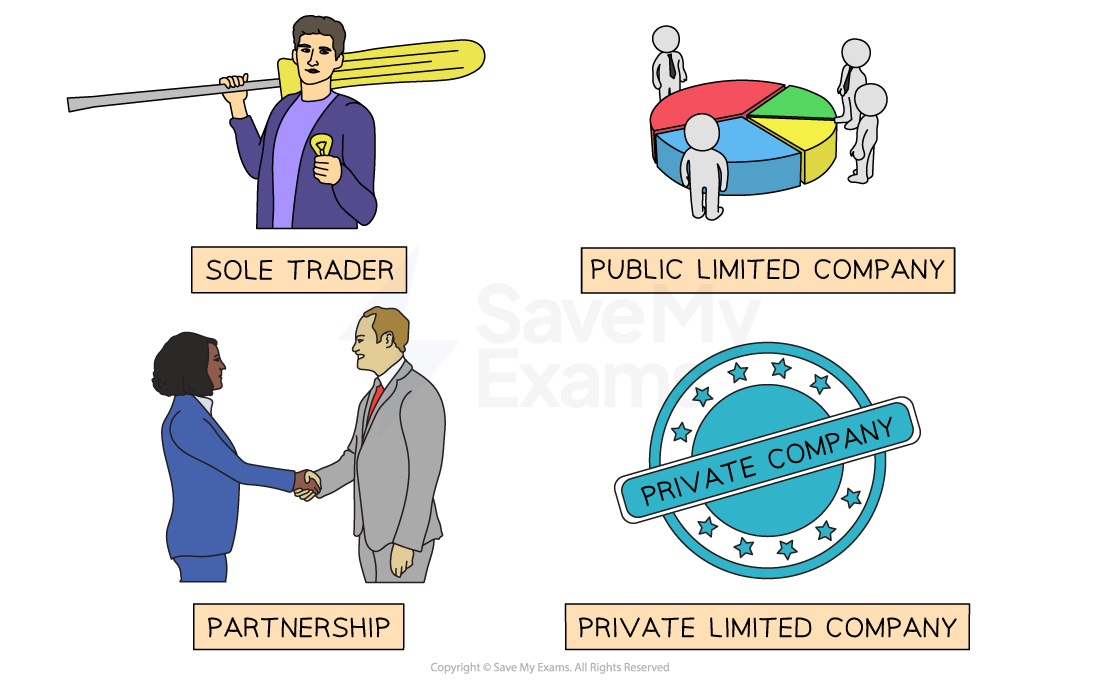Risk, Ownership and Limited Liability
- When an entrepreneur starts a business, they need to consider what kind of legal structure they want for their business
- Their decision will depend upon a range of factors
- The level of personal risk they are willing to take
- The advice they receive
- The level of privacy they would prefer in running the business
Diagram: Types of Business Ownership

Businesses can operate as sole traders, partnerships or companies
- Sole traders and partnerships are unlimited liability businesses
- They are easy to set up and start trading
- Information about their financial performance does not need to be shared outside of the business
- Private limited companies and public limited companies offer the protection of limited liability to their owners (shareholders
- Setting up a company is a legal process that takes time to arrange
- Information about financial performance needs to be shared with Companies House and is available for scrutiny by any interested third party
A Comparison of Unlimited & Limited Liability
Liability |
Description |
Implications |
|
Unlimited liability |
|
|
Limited liability |
|
|


